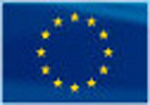Air traffic over Central Europe flying towards more integration by December 2012 thanks to EU-funded project

Austria, Hungary, the Czech Republic and Slovenia participate in a common action with €1.4 million of EU co-financing. The study identifies solutions to implement the Single European Sky II (SES II) legislation and aims to improve safety, capacity, environmental performance, as well as reduce air transport costs.
4 December 2012 is the deadline fixed by the European Commission to establish the Functional Airspace Blocks (FAB) all over Europe so that air traffic management services can be harmonised throughout the continent. The FAB Central Europe (FAB CE) Implementation of Static Area of Responsibility Scenario study involves four Member States (Austria, Hungary, the Czech Republic and Slovenia). It aims to devise solutions to implement the performance targets of the SES II legislation, in particular in the areas of safety, capacity, flight efficiency, environment, and cost effectiveness. After obtaining the first results through the Feasibility Study Master Plan in 2010, this study is the last major phase to meet the deadline.
A study chosen under the 2010 TEN-T Multi-Annual Call, will deal specifically with the FAB CE pre-implementation phase which will prepare the establishment of common airspace design and airspace planning processes, lay the foundations for an advanced level of interoperability to enable cross-border operations in the FAB, and will develop coordinated approaches and harmonisation of systems and methodologies.
More specifically, the main objectives of the FAB CE and the concerned Air National Service Providers (ANSP) are:
This study takes place in the global framework of the Single European Sky legislation which requires Member States and Air National Service Providers to develop policies to coordinate their services, with the aim of implementing their FABs by 2012.
A study chosen under the 2010 TEN-T Multi-Annual Call, will deal specifically with the FAB CE pre-implementation phase which will prepare the establishment of common airspace design and airspace planning processes, lay the foundations for an advanced level of interoperability to enable cross-border operations in the FAB, and will develop coordinated approaches and harmonisation of systems and methodologies.
More specifically, the main objectives of the FAB CE and the concerned Air National Service Providers (ANSP) are:
- Connecting the currently fragmented ANSP activities of the four countries within the FAB Network
- Improving the civil-military coordination by connecting the FAB activity with military airspace users needs and by the applying a flexible use of airspace management
- Harmonising and coordinating the capacity planning process
- Coordinating the FAB-FAB interface prior to the appointment of a network manager
- Working towards achieving full operational interoperability of the Air Traffic Management (ATM) systems by optimising existing functionalities
- Implementing the relevant parts of the Implementation Package 1 (IP1) concept defined in the SESAR (Single European Sky ATM Research) Master Plan to improve performance
This study takes place in the global framework of the Single European Sky legislation which requires Member States and Air National Service Providers to develop policies to coordinate their services, with the aim of implementing their FABs by 2012.






.jpg)
.png)

Comments
There are no comments yet for this item
Join the discussion